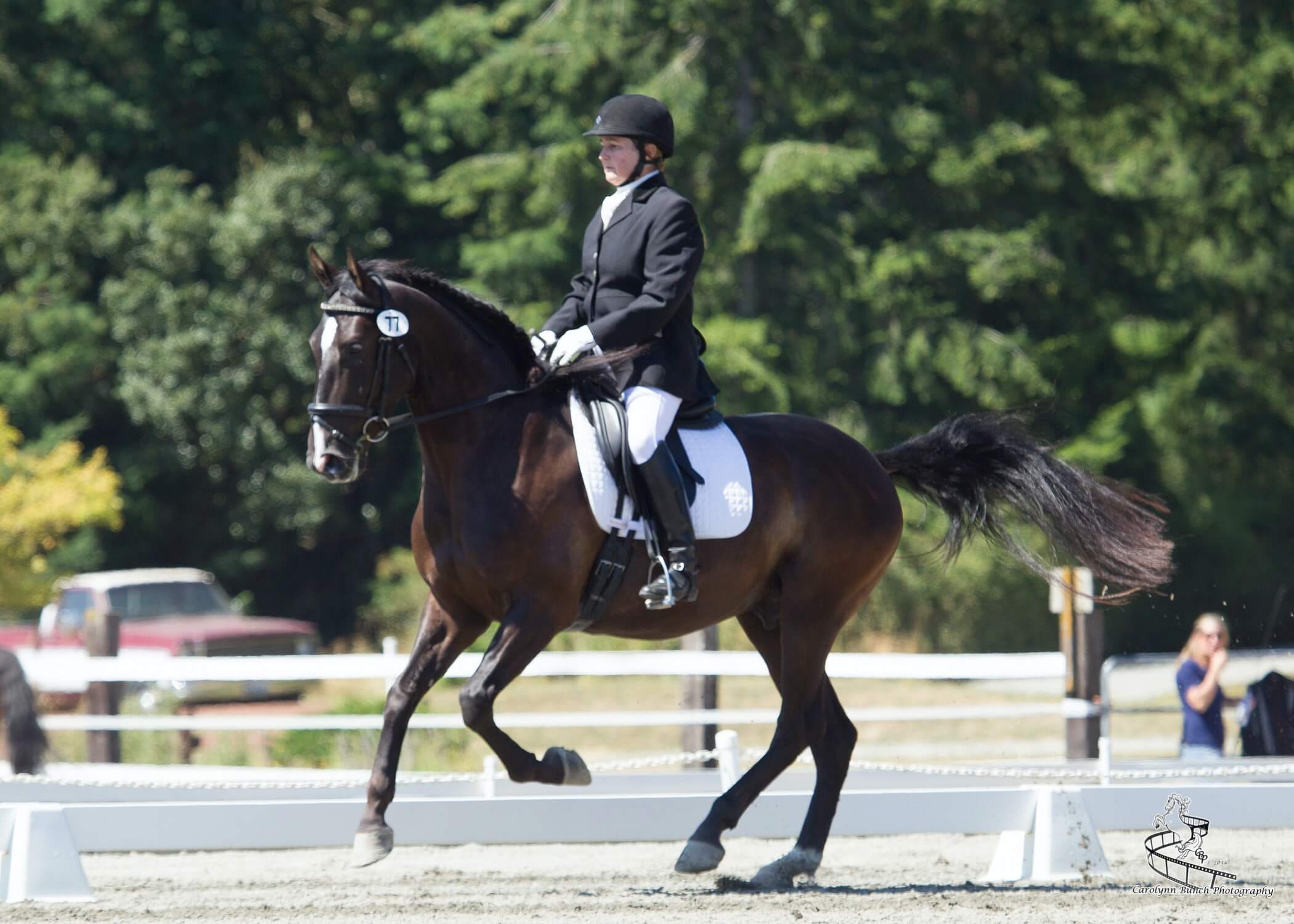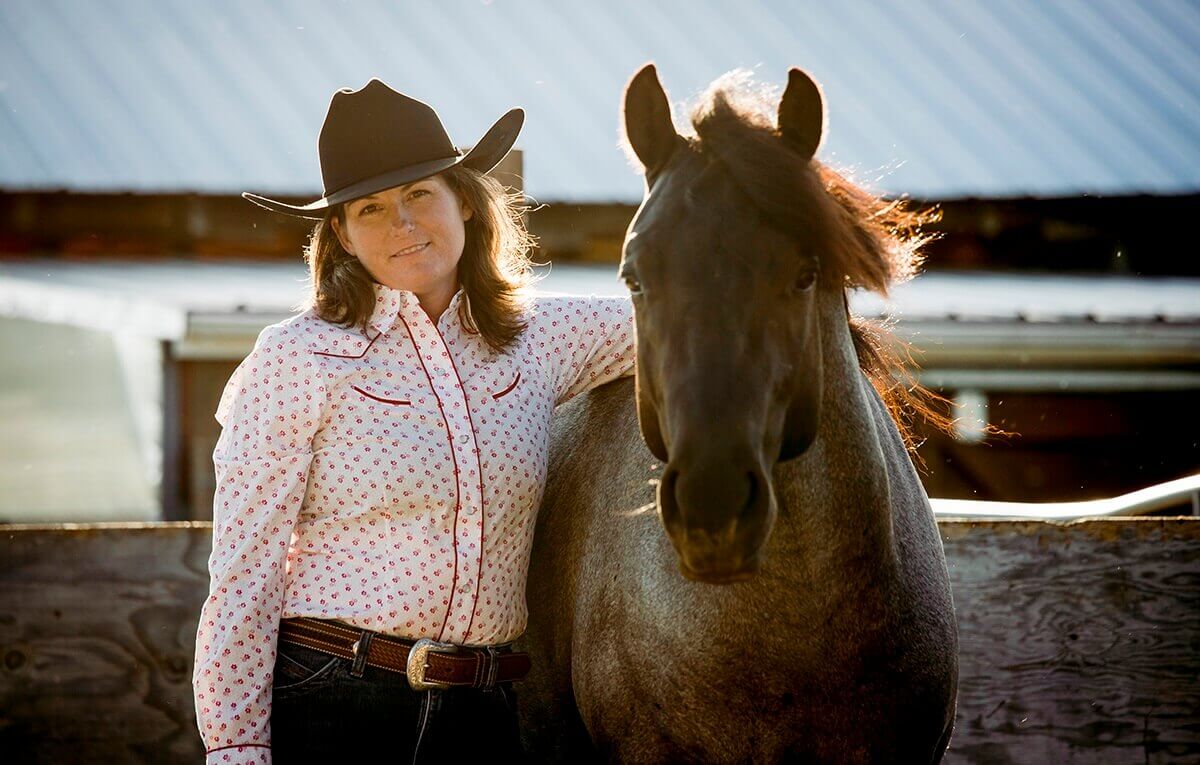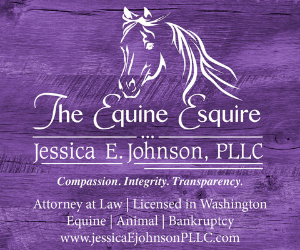Focusing on the Longevity and Soundness of the Horse
Interview by Kim Roe
What is the name of your business?
Balanced Performance Training and Hoofcare, LLC
What do you do?
I’m a farrier and I also accept horses and mules for training. I teach lessons (and can provide lesson horses in some cases) and give clinics. I work with intermediate riders mostly.
Describe your journey to becoming a professional.
I was a horse-crazy city kid who dreamed of having a horse. I read all the horse books, had 40 Breyer horses, and was consumed with thoughts of horses. When I was 12, after years of longing, I was able to lease a horse, Yucca, from a family friend. Yucca was a green 15-hand mare who became my best friend.
My passions were art and horses. When I was 16, I was in Running Start at Everett Community College and wanted to pursue an art degree. However, my mom said, “Not a chance!” So I said, “Okay, I’ll be a horse trainer!” I started looking for trainers to learn from and was able to work with some good ones.
Where are you located?
We’re in Bellingham, Washington and are in the final states of building an indoor arena.
Who has influenced you the most in your equestrian journey and why?
When I was 20, I met Curt Storbakken, a cutting trainer, and I begged to work for him. He kept saying, “No, go away kid.” But I kept showing up and finally he gave me a job riding young horses and cleaning stalls.
Curt made me into a rider. Before I met him, I had no idea how to control my hips and how to relax my leg and use my balance to stay on quick moving horses. He taught me how to start horses in a safe and effective way for the rider and the horse.
After Curt I started a classical dressage journey and read books written by Nuno Oliveira, Phillipe Karl, and others, and put those ideas into my training.
What disciplines or aspects of the industry are you involved in and why?
My focus is on longevity, soundness, and the proper movement of the horse and developing riders who can take the average horse and make them look amazing, regardless of conformation. I’m excited the AQHA is focusing on proper movement as well. The ranch riding class rules in particular go nicely with my program. The AQHA doesn’t want horses behind the vertical at all in these classes, which I admire. I teach my students how to achieve collection and extension without using tie downs, draw reins, or martingales, and instead focus on classical riding to enhance the Western horse.
What breeds have you trained?
I love Arabians, Andalusians, and American Quarter horses (especially the ones that have a Spanish look to them). I ride with a heavy influence from the Jineta style so prefer 16-hand horses or shorter who are quick and agile. I also trained mules for years and they taught me a lot about horses—especially how to train a bridle horse. Many mules will bolt if the snaffle or shanked bit is used improperly. They taught me the importance of poll flexions and not to over bend the neck.
Memberships/organizations/affiliations/clubs?
Pacific Northwest Ranch Riding Association member, AQHA member.
What are your business goals? Where do you hope to be in 5 years?
I’d like to have a thriving riding school where I can pass on the knowledge I’ve acquired over the past 25 years. I want to develop students into thoughtful riders who have horses who are light and functional.
I think the art of riding needs to be taught, and I love how more professionals are bringing back the ancient wisdom of classical riding. It’s my opinion Western riding focuses too much on getting the horse to perform without teaching people how to ride well. I believe many horses can be developed into more athletic versions of themselves by working on straightness/balance, and the flexibility and stability of the muscle groups.
What’s your training philosophy?
Things should be presented to the horse in a way that makes it easy for them to perform. The horse’s back must be respected, and great care must be taken to keep it soft and supple. The face of the horse must be treated with love—this means no harsh yanks of the reins—and the rider must understand the reins are for balancing the horse and steering is secondary. Horses and people need to be free to make mistakes without being punished and instead use their mistakes to educate both horse and rider. My main objective with any horse is that it enjoys being ridden and it’s not just something the horse tolerates.
Contact information:
Call: 509-607-0103
Facebook.com/WhatcomHorseandMuleHelp
See this article in the January 2024 online edition:
January 2024

Kim Roe grew up riding on the family ranch and competed in Western rail classes, trail horse, reining, working cow, and hunter/jumper. She trained her first horse for money at 12 years old, starting a pony for a neighbor.
Kim has been a professional dressage instructor in Washington state for over 30 years, training hundreds of horses and students through the levels. In recent years Kim has become involved in Working Equitation and is a small ‘r’ Working Equitation judge with WE United.
Kim is the editor of the Northwest Horse Source Magazine, and also a writer, photographer, and poet. She owns and manages Blue Gate Farm in Deming, Washington where she continues to be passionate about helping horses and riders in many disciplines.





